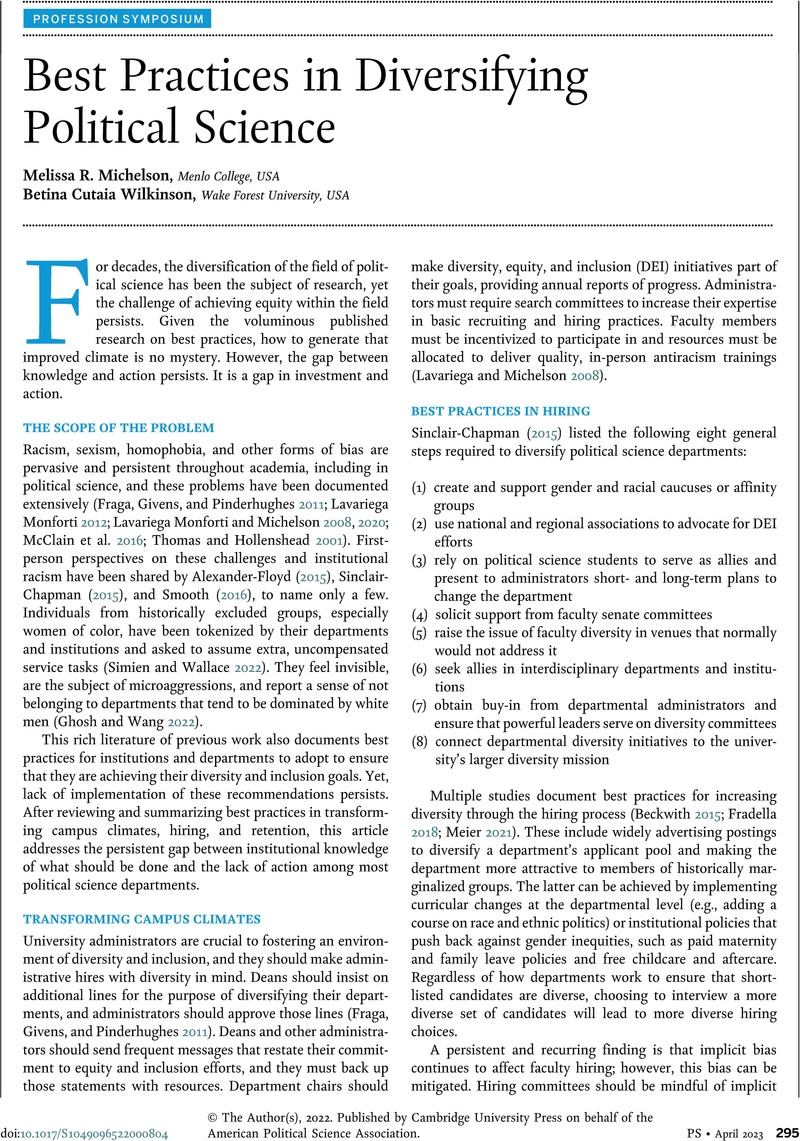Crossref Citations
This article has been cited by the following publications. This list is generated based on data provided by Crossref.
Mershon, Carol
2023.
Introduction: The Import of Equity and Equality for All Political Scientists.
PS: Political Science & Politics,
Vol. 56,
Issue. 2,
p.
281.
Ackerly, Brooke A.
and
Franklin, Sekou
2023.
Climate and the American Political Science Association.
PS: Political Science & Politics,
Vol. 56,
Issue. 2,
p.
299.
Gonzales, Leslie D.
Culpepper, Dawn
and
Anderson, Julia
2023.
Higher Education: Handbook of Theory and Research.
Vol. 39,
Issue. ,
p.
1.
Sinclair-Chapman, Valeria
and
Barker, David C.
2023.
Broadening Perspectives in Studies of American Governance.
Congress & the Presidency,
Vol. 50,
Issue. 2,
p.
127.
Gonzales, Leslie D.
Culpepper, Dawn
and
Anderson, Julia
2024.
Higher Education: Handbook of Theory and Research.
Vol. 39,
Issue. ,
p.
381.
Gonzales, Leslie D.
Culpepper, Dawn
and
Anderson, Julia
2024.
Higher Education: Handbook of Theory and Research.
Vol. 39,
Issue. ,
p.
1.
Payler, Megan
Huo, Cynthia
Anderson, Cameron
Biswas Mellamphy, Nandita
and
Alcantara, Christopher
2024.
The Gender Gap and Academic Publishing in Political Science: Evidence from Canada.
American Review of Canadian Studies,
Vol. 54,
Issue. 2,
p.
141.



